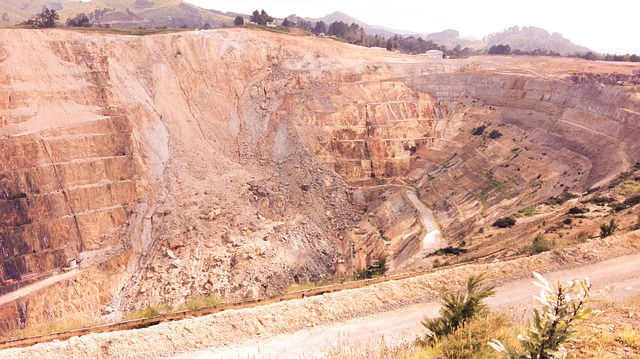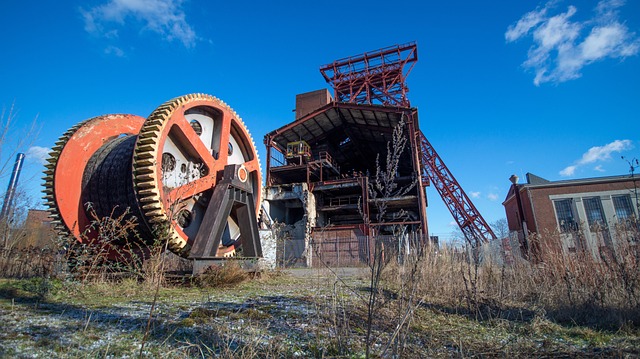The Oregon Gold Rush of 1849 dramatically changed Lane County, transforming its landscape and society. An influx of global miners led to the rapid development of numerous boomtowns, intense competition for mining claims, and a surge in population. This economic boom brought prosperity but also social disparities as residents vied for dwindling claims. The once-peaceful countryside became a bustling hub, with prospectors from diverse backgrounds contributing to the region's rich gold rush history and culture. Today, visitors can explore remnants of this era through historical sites and museums.
“Lane County, Oregon, experienced a dramatic cultural transformation during the 19th-century gold rush. The historical context sets the stage for an era defined by the influx of prospectors seeking fortunes in the region’s rich mineral deposits. This article explores the rise of Lane County gold miners, their economic impact on local boomtowns, and the lasting cultural shifts that shaped modern-day communities. Delve into the world of Lane County mining claims, gold rush economics, and the vibrant Oregon gold rush towns that once thrived.”
- Historical Context: The Oregon Gold Rush and Its Impact on Lane County
- Rise of Prospectors: Who Were the Lane County Gold Miners?
- Economic Transformation: The Boomtowns and Mining Claims of Lane County
- Cultural Shifts: Life in a Gold Rush Town
- Legacy: The Lasting Effects of the Gold Rush on Modern-Day Lane County
Historical Context: The Oregon Gold Rush and Its Impact on Lane County

The Oregon Gold Rush, which began in 1849, had a profound impact on Lane County, transforming its landscape and society. Prospective miners from across the globe flocked to the region, attracted by the promise of untapped gold deposits. This influx triggered a series of cultural and economic shifts that reshaped local communities. The once-peaceful countryside became a bustling hub of activity with the sudden emergence of numerous gold rush towns.
Lane County’s mining claims quickly exhausted the easily accessible gold veins, leading to competition among prospectors for the best remaining locations. This economic boom fueled population growth, as people gathered in boomtowns to trade goods and services. The gold rush economics pumped money into the local economy, but it also fostered social disparities and a transient lifestyle. Many residents struggled to balance the euphoria of potential wealth with the challenges of remote living and unpredictable mining outcomes.
Rise of Prospectors: Who Were the Lane County Gold Miners?

The gold rush in Lane County, Oregon, brought forth a diverse group of individuals known as prospectors—a term that encapsulates the thrill-seeking and adventurous spirits who sought their fortunes in the rich mineral deposits of this region. These Lane County prospectors, drawn from various walks of life, flocked to the area during the peak of the Oregon gold rush in the mid-19th century. They were a mix of recent immigrants, local farmers seeking supplementary income, and seasoned miners who had traveled west in search of new opportunities.
The influx of these prospectors sparked significant cultural changes in Lane County. The once peaceful landscape underwent a dramatic transformation as booming mining towns sprang up, each with its own unique character. These Oregon gold rush towns became hubs of economic activity, where miners from all over gathered to exchange stories, share resources, and compete for the limited supplies available. The mining claims in Lane County were highly coveted, leading to intense competition and, at times, conflicts among the prospectors. This period left an indelible mark on the region’s history, shaping its identity as a place where dreams of striking it rich were pursued with fervor and where the economics of gold rush days still echo through the annals of local lore.
Economic Transformation: The Boomtowns and Mining Claims of Lane County

The gold rush in Lane County, Oregon, brought about a dramatic economic transformation that left an indelible mark on the region’s history. With the discovery of rich gold deposits, the county became a magnet for prospectors from all walks of life, each hopeful for their fortune. This influx sparked the development of numerous boomtowns across Lane County, temporary settlements that sprang up overnight to cater to the needs of the mining community. The vibrant hustle and bustle of these towns mirrored the feverish activity in the mines, where Lane County prospectors toiled day and night in search of precious metals.
The economic impact was profound, as the gold rush drove a surge in population and fueled the construction of various businesses and services to support the mining industry. Mining claims covered vast areas, leading to intense competition for the best locations. This period witnessed the county’s shift from a relatively quiet agricultural region to a thriving center of gold rush economics, with the fortunes made during this time shaping the future development of Lane County’s towns and communities.
Cultural Shifts: Life in a Gold Rush Town

The arrival of gold miners in Lane County sparked a profound cultural transformation. Prospectors from diverse backgrounds flocked to the region, attracting a multicultural population that included Europeans, Asians, and people of diverse ethnic origins. This melting pot of cultures created unique social dynamics and contributed to the rich cultural tapestry of Oregon’s gold rush towns. The once-quiet agricultural communities grew exponentially, transforming into bustling boomtowns with lively saloons, general stores, and vibrant marketplaces.
The economic boom induced by gold mining had a lasting impact on Lane County. The influx of prospectors led to increased demand for goods and services, stimulating local businesses and fostering entrepreneurial spirit. Mining claims were staked across the county, with ambitious individuals hoping to strike it rich. This period witnessed dramatic shifts in social structures as miners sought opportunities, formed partnerships, and carved out their place in this new frontier. The gold rush era left an indelible mark on Lane County’s history, shaping its cultural landscape and contributing to its diverse heritage.
Legacy: The Lasting Effects of the Gold Rush on Modern-Day Lane County

The Gold Rush that swept through Lane County in the mid-19th century left an indelible mark on the region’s history and culture, shaping its identity even today. The influx of prospectors and miners transformed small communities into bustling boomtowns, with saloons, general stores, and smelters springing up alongside newly discovered gold veins. This period fostered a unique blend of diverse cultures as people from various backgrounds flocked to Lane County in search of fortune.
The economic surge brought about by the rush had long-lasting implications for the area. It encouraged infrastructure development, improved transportation networks, and stimulated local businesses. Many of the mining towns evolved into established communities, preserving their historic charm while embracing modern amenities. Today, visitors can still explore remnants of this era through historical sites, museums, and the very land that once echoed with the sound of pickaxes and pans, reminding us of Lane County’s rich gold rush heritage and its enduring legacy.
